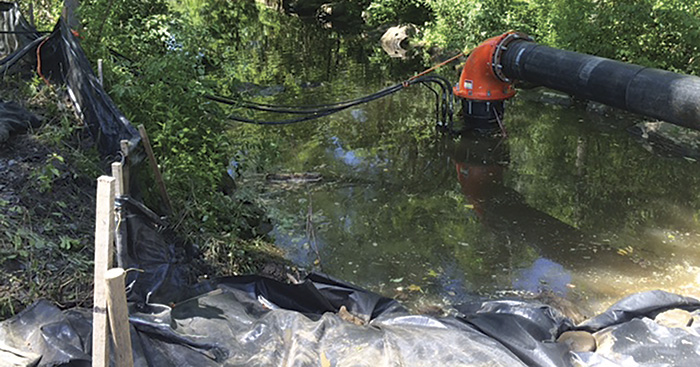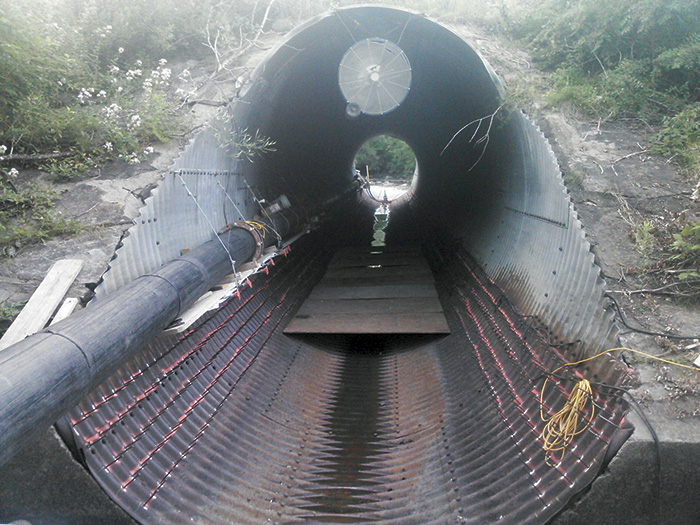Pump bypass solution provides access for critical repair work.
Xylem
02/15/2017
The maze of streams, brooks and creeks that make up the world’s wetlands are an integral part of the ebb and flow of groundwater and storm water ecosystems. From seasonal snowmelt to runoff after a storm event, these boundary-less entities expand and contract, absorbing and dispersing water like a complex network of arteries. As populations continue to swell, suburban development infringes upon wetlands for housing, roadways, commercial facilities and industrial complexes.
 Image 1. The dewatering pump provided enough flow capabilities to move the Mayfield Creek water from one end of the culvert to the other. (Images courtesy of Xylem)
Image 1. The dewatering pump provided enough flow capabilities to move the Mayfield Creek water from one end of the culvert to the other. (Images courtesy of Xylem)Road Repair
In 2015, the New York State Department of Transportation (NYSDOT) engaged in a number of infrastructure improvement projects in upstate New York. As part of that process, it sought bids to repair the Route 30 Mayfield Creek culvert. The drawings from the NYSDOT engineer called for a cofferdam or waterway diversion structure on either end of the culvert to enable the contractors to access the pipe for repair. The bid pricing needed to include the costs for the contractor to install the diversion structures, as well as perform the repair work. The solution was a bypass scenario that would move creek flow from one end of the culvert to the other, bypassing the culvert altogether and dewatering the culvert for the contractor to engage in the culvert repair effort. The NYSDOT went in to the bid process thinking that traffic disruption on Route 30 would be inevitable. However, traffic on Route 30 was not impacted because the bypass piping ran through the culvert, and the road right-of-way was avoided.Challenging Scenario
Mayfield Creek flow rates through the culvert can run as much as 500,000 gallons per minute (gpm). Realistic flows during the drier summer months are significantly less, and can be managed by a 14,000-gpm bypass. So the original design called for a 24-inch high density polyethylene (HDPE) pipe sitting on a support system on the bottom of the culvert running about 200 feet. Image 2. The chosen solution required a complete temporary bypass, with the piping passing through the culvert, from rigging to hang the pipe off the side of the culvert.
Image 2. The chosen solution required a complete temporary bypass, with the piping passing through the culvert, from rigging to hang the pipe off the side of the culvert. Image 3. The power pack was situated 150 feet from the creek to address environmental concerns.
Image 3. The power pack was situated 150 feet from the creek to address environmental concerns.
